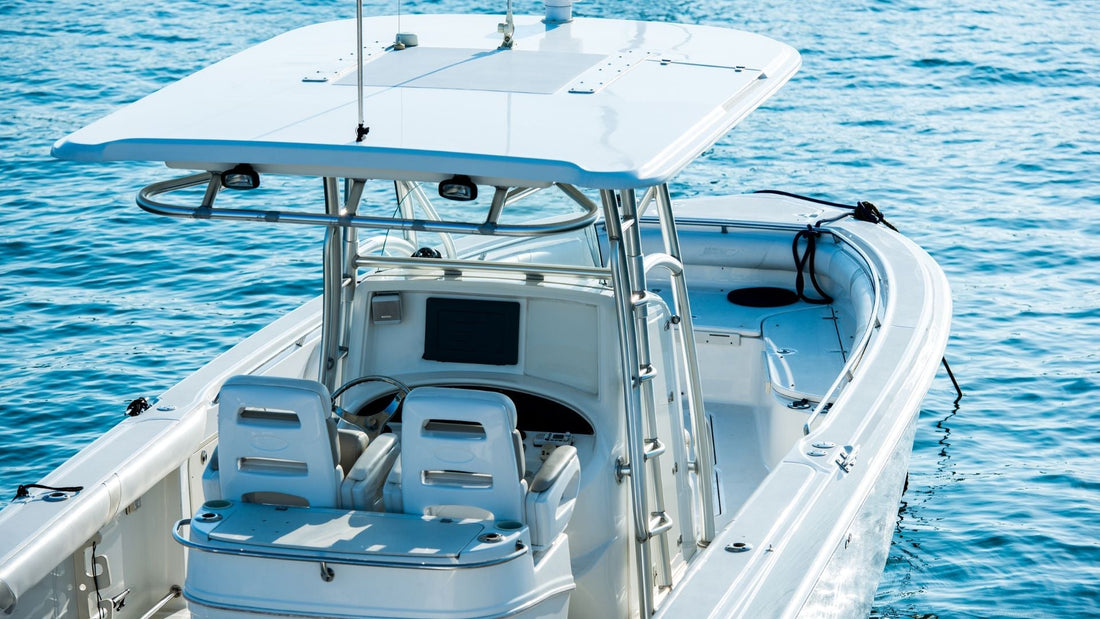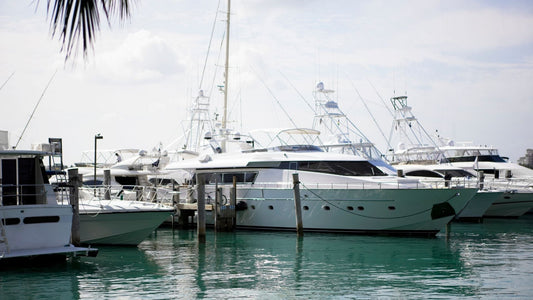
What is a Boat Gunwale?
Nicholas HeislerShare
If you spend any time around boats, you’ve probably heard the term gunwale (pronounced “gunnel”). It’s one of those nautical words that comes up often—yet many boaters can’t quite explain what it means or why it matters. The gunwale may not get the same attention as engines, hulls, or electronics, but it plays an essential role in the structure, safety, and usability of your boat.
In this guide, we’ll break down exactly what a boat gunwale is, what it’s used for, where the name comes from, and how you should clean and maintain it. By the end, you’ll have a much deeper appreciation for this often-overlooked feature of your vessel.
What is a Boat Gunwale?
A boat gunwale is the upper edge of a boat’s hull where it meets the deck. Think of it as the rim of the boat. On most boats, the gunwale runs from bow to stern on both sides, creating a reinforced edge that adds strength and stability.
Depending on the type of boat, gunwales can look and function differently:
-
Fishing boats often feature wide, flat gunwales designed for mounting rod holders, cleats, and other accessories.
-
Pontoon boats usually have aluminum or vinyl-wrapped gunwales integrated with fencing and safety rails.
-
Sailboats rely on sturdy gunwales to anchor rigging and lifelines.
Regardless of design, the gunwale always marks the boundary between the deck and the open water.
The Purpose of Gunwales on Boats
Gunwales serve several critical functions that go far beyond being just an edge.
Structural Support
The gunwale strengthens the hull and adds rigidity. On smaller boats especially, it prevents the sides from flexing under stress, whether from waves, docking, or passengers moving around.
Safety
Gunwales provide a natural barrier that helps keep passengers inside the boat. They also serve as anchor points for rails, lifelines, or handholds—features that are especially important on sailboats or in rough waters.
Utility
Many of the boat’s accessories are attached directly to the gunwale. These include:
-
Cleats for tying dock lines
-
Rod holders and fishing gear mounts
-
Fender hooks
-
Cupholders and utility mounts
Without gunwales, attaching and securing these essential pieces of equipment would be much more difficult.
Comfort
For passengers, gunwales often double as armrests or sitting points. On fishing boats, anglers lean against them for balance while casting or reeling in a catch.
Where the Name “Gunwale” Comes From
The history of the word “gunwale” goes back centuries. The term originated in the days of wooden warships. Early naval vessels mounted cannons along their sides, and to support the immense recoil of these weapons, shipbuilders reinforced the upper edge of the hull. This reinforced section was called the “gun wall.”
Over time, “gun wall” evolved into “gunwale,” but the pronunciation shifted to the shorter “gunnel.” While today’s recreational boats no longer carry cannons, the term stuck—and it still refers to the strengthened upper edge of the hull.
This bit of nautical history explains why the gunwale has always been about strength and reinforcement, even though its modern functions have expanded to include safety and utility.
Materials and Design of Modern Gunwales
Boat gunwales vary widely in design and materials depending on the vessel type.
-
Fiberglass boats typically have molded fiberglass gunwales, sometimes capped with stainless steel or vinyl rub rails for durability.
-
Aluminum boats feature extruded aluminum gunwales, which are strong, lightweight, and easy to modify with accessories.
-
Wooden boats may use hardwood gunwales for strength and aesthetics, though these require more upkeep.
-
Pontoon boats usually integrate aluminum fencing and protective vinyl trim into the gunwale structure.
Modern gunwales may also include built-in features such as:
-
Integrated storage compartments
-
Fishing rod racks
-
Cupholders
-
LED lighting
-
Rub rails to protect against docks and pilings
No matter the design, the core purpose remains the same: durability, safety, and convenience.
How to Properly Clean and Maintain Boat Gunwales
Like every part of your boat, gunwales require regular cleaning and care. Because they’re located on the top edge of the hull, gunwales are constantly exposed to sun, saltwater, and physical wear from docking and foot traffic.
Here’s a step-by-step cleaning process:
1. Rinse With Freshwater
After every outing—especially in saltwater—rinse your gunwales thoroughly. This prevents salt buildup, which can corrode hardware and stain surfaces.
2. Use Marine-Safe Soap
Apply a high-quality, marine-grade boat soap with a soft brush or sponge. Pay attention to seams, hardware, and crevices where grime accumulates. Avoid harsh household cleaners that can strip protective coatings.
3. Scrub Gently
For fiberglass or gelcoat gunwales, use a non-abrasive brush. For aluminum, a mild boat cleaner works well, but avoid anything too acidic that could etch the surface.
4. Dry Thoroughly
Use a microfiber towel or chamois mop to dry the gunwales completely. This helps prevent water spots and mildew.
5. Apply UV Protectant
Spray or wipe on a UV protectant designed for marine surfaces. This helps prevent fading, chalking, and cracking caused by long-term sun exposure.
Regular cleaning not only keeps your boat looking sharp but also extends the life of the gunwales and attached hardware.
Common Issues and Repairs for Gunwales
Because of their exposed position, gunwales often experience wear and tear. Some common issues include:
-
Scuffs and scratches from docking, fishing gear, or passengers.
-
UV fading that makes fiberglass or vinyl gunwales look dull.
-
Loose hardware as screws or bolts work free over time.
-
Dock rash from repeated contact with pilings, docks, or other boats.
Minor scratches can often be buffed out with polish, while loose hardware just needs tightening. More significant damage, such as cracked fiberglass or bent aluminum, may require professional repair.
Knowing when to fix issues yourself and when to seek help is part of smart boat ownership. If the gunwale damage compromises safety or structure, don’t cut corners – get it repaired properly.
Tips to Extend the Life of Your Gunwales
Prevention is always cheaper than repair. Here are some practical steps to keep your gunwales in top shape:
-
Use fenders every time you dock to protect against impact damage.
-
Apply protectants regularly to fight UV damage and fading.
-
Install padding or covers if your gunwales see heavy fishing or passenger use.
-
Avoid harsh chemicals that can break down finishes.
-
Inspect seasonally for signs of cracks, loose fittings, or corrosion.
These small steps can save you hundreds—or even thousands—in long-term repairs while keeping your boat looking its best.
Why Understanding Your Gunwales Matters
It’s easy to overlook gunwales because they don’t involve horsepower, electronics, or flashy upgrades. But they matter more than most boaters realize.
-
Structurally, gunwales reinforce your hull and keep your boat safe.
-
Practically, they provide the foundation for hardware, accessories, and comfort.
-
Financially, well-maintained gunwales help preserve resale value.
Simply put, your boat’s gunwales are a silent partner in every outing. By giving them the care they deserve, you’ll enjoy a safer, more reliable, and longer-lasting vessel.
Bringing it All Together: Why Gunwales Matter
So, what is a boat gunwale? It’s the sturdy upper edge of your hull—part safety feature, part structural reinforcement, part utility mount. Its name harkens back to the age of naval cannons, but its purpose today is just as vital.
By cleaning, protecting, and maintaining your gunwales, you’ll not only extend the life of your boat but also make every trip safer and more enjoyable. Next time you’re out on the water, take a closer look at those edges—you’ll see just how much they contribute to the boating experience.
When it comes to keeping your gunwales and entire boat clean, look to Captains Preferred Products' boat brushes and cleaners.




